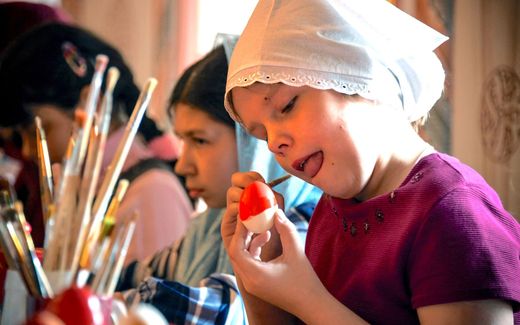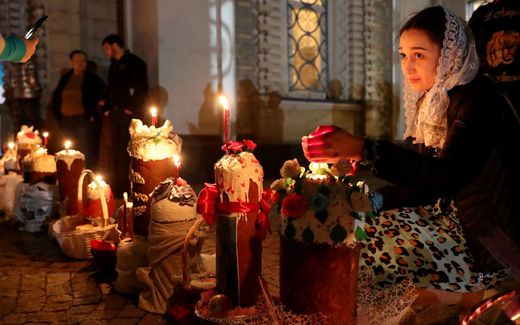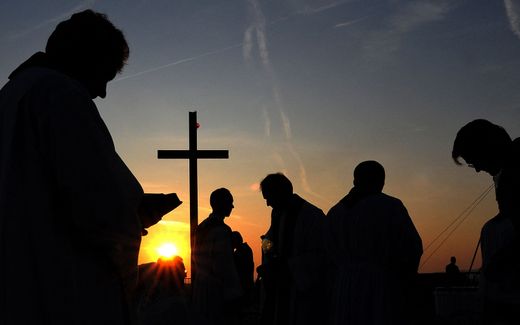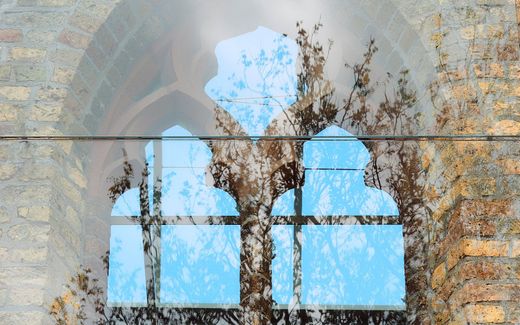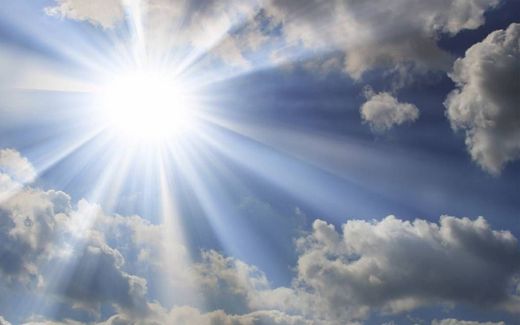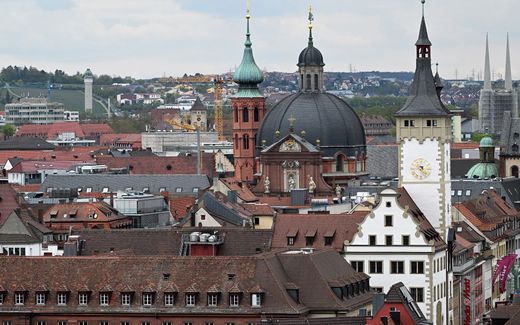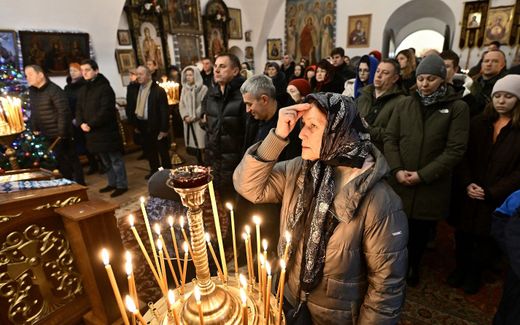The time of Lent, what does that mean?
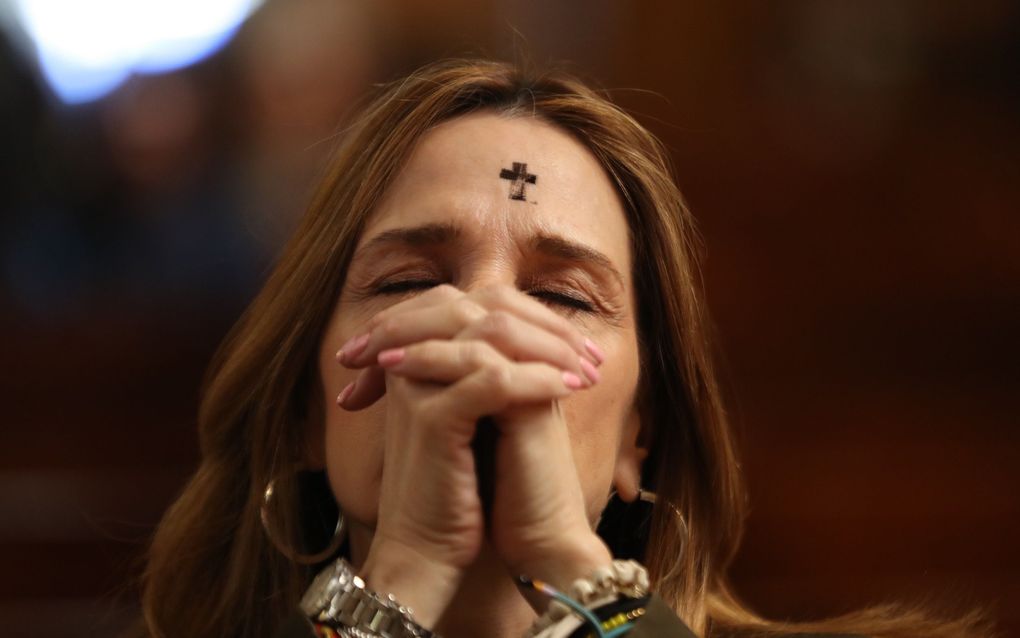
A woman prays after receiving an ash cross during the celebration of the traditional Catholic Ash Wednesday. Photo EPA, Sashenka Gutierrez
Christian Life
Christmas seems to be just over. Yet, the ecclesiastical year has started a new period: Lent. What is that about? And what are the different styles of the Christian denominations?
After Valentine's Day, the stores fill their shelves with eggs, bunnies and little chicks. Suddenly, it feels like spring again. Yet, Lent entails much more than that. In Eastern Orthodox Churches, it is even the preparation time for the biggest Christian feast of the year.
So how does that work? Well, the first we can say is that different traditions have their own experience of this. Evangelicals celebrate these weeks very different from Roman Catholics or Eastern Orthodox believers.
Forty days before Easter, the great feast of the victory of Jesus Christ over death, hell and grave, the church goes through a sober period, which is called Lent in Western Europe and Great Lent in Eastern Europe.
Seven weeks
The time of Lent consists of seven weeks. In comparison, Advent lasts four weeks. This difference shows that the Christian church sees more value in the Passion time than in the time of Jesus’s birth.
In the Protestant tradition, the church calendar usually colours the themes of the sermons. Preaching, after all, is what is central in the Reformed and Evangelical churches. Well-known chapters are Matthew 26 and 27, that are central in Bach’s Matthäus Passion as well. From the Old Testament, it is Isaiah 53 that attracts attention during Lent.
By the way, the Presbyterian tradition in Scotland (which is Reformed as well) does traditionally not know the ecclesiastical year. There are still churches that have no services on Christmas and do not recognise Lent or Advent. Their understanding is that the weekly Lord’s day (Sunday) is the only Biblical day to keep.
The idea behind Lent
Traditionally, Lent is classified as a period of fasting. The forty days are based on the fact that Jesus fasted for forty days in the desert when He was tempted by Satan. In the past, fasting often consisted of a sober diet, for example, eating vegetarian. However, nowadays, there are many more ways to fast. Some people cut down their use of social media during Lent. Others decide that they want to fast on their online shopping habits and only do necessary spending. However, throughout all the years, the goal of fasting has remained the same: to come closer to God.
The Dutch Roman Catholic bishop Ron van den Hout sees Lent as a chance, given by God “to restore the relationship with Him”, he tells the Dutch daily Nederlands Dagblad. He sees fasting as a way to come closer to the “suffering Christ Who did not eat or drink for forty days in the desert and said while being on the cross: “I thirst.”” Other things that classify the Roman Catholic Lent are prayer, abstinence and almsgiving.
Lencten
The name Lent comes from the old English term lencten, which means spring time. Lent takes place every year around the spring, but the exact dates vary, as the timing of Easter is dependent on the moon.
Even though the customs and traditions vary from culture to culture, the period of Lent in Western Europe has several highlights:
Shrove Tuesday
Shrove Tuesday is the evening before Ash Wednesday. The word Shrove is derived from the term shrive, which refers to the pardon of sins. Shrove Tuesday is meant for confessing your sins in preparation for the Lent period.
However, instead of a sober day as one would expect from a day of confession of sins, Shrove Tuesday has acquired the character of a festival as many people celebrate it as Carnival, a party where people dress up.
Ash Wednesday
Ash Wednesday is the first official day of Lent. Roman Catholic believers go to the Church to get a small black cross of ashes on their forehead. The ashes symbolise repentance from sin and remind people of their mortality.
Some Protestant believers celebrate Ash Wednesday as well, and they do get a cross of ashes on their face.
Palm Sunday
During Palm Sunday, Jesus’ procession into Jerusalem is commemorated. It is the last Sunday before Easter. Palm branches are blessed and then used in a procession. Roman Catholic Churches burn the branches afterwards to prepare ashes for the Ash Wednesday of the next year. Protestant churches do not do this.
Maundy Thursday
Maundy Thursday commemorates the Last Supper Jesus held with His disciples. On the day before His crucifixion, Jesus celebrated the Passover with the twelve disciples. After that, He instituted the Lord's Supper as a commemoration of His suffering and death on the cross.
Good Friday
Good Friday is the commemoration of Jesus’s death on the cross on Golgotha. Most churches celebrate this day with church services. This day is celebrated by most Christian denominations, including the Eastern Orthodox churches.
Good Friday is the most important day for many Reformed churches. Some call it “the pay day of the church”, because Jesus died for the atonement of sins on the cross on this day. Reformed churches from the Dutch tradition (in the Netherlands and in immigration countries) usually have one church service on Good Friday. The preaching will concentrate on the death and suffering of Christ.
Holy Saturday
Holy Saturday is the Saturday after Good Friday. This Saturday is special because it commemorates the period that Jesus’s body was in the grave of Joseph of Arimathea.
Easter
With Easter, the period of fasting is officially over. This day commemorates the resurrection of Jesus from the grave.
Special
The Eastern Orthodox churches also celebrate Easter and Lent but they do so on different dates than the churches in Western Europe. This has to do with the older calendar they use. For example, in 2024, the Lent for the Western churches started on February 14, which is called Ash Wednesday. Eastern Orthodox Churches will not start their preparations for Easter until March 18. In addition, the Eastern Orthodox Church has its own special days around the period of their Great Lent:
The celebrations already start two weeks prior to the official start of the Great Lent. Two weeks in advance, there is Meatfare Sunday. On this day, the fasting already partially starts, because the Orthodox believers remove the meat from their homes.
After Meatfare Sunday, there is Forgiveness Sunday, which is also called Cheesefare Sunday. This day, the dietary rules are tightened even more as all dairy products are banned.
Cleaning
The Great Lent officially starts with Clean Monday, seven weeks before Easter. Churches hold a special Forgiveness service on the Sunday evening before, in which the attendees ask for forgiveness of their sins. The first week of Great Lent is very much about cleaning the house as well. Strict Orthodox see Clean Monday as a total fast, and only consume a little water.
The Sundays during the Great Lent are dedicated to several topics, such as icons, several saints and the cross of Jesus.
Sacrament
The last week before Easter is called Holy Week in the Orthodox churches. Just like in their Western counterparts, this week starts with Palm Sunday. It is followed by Holy Monday, Tuesday and Wednesday. These days are all about Jesus and His last days on Earth. Some Orthodox, like the ones in Greece, conclude the Wednesday with the sacrament of the Holy Unction, which symbolises the forgiveness of sins and the healing of body and soul.
Maundy Thursday is also called Holy Thursday by the Orthodox and is more extensive than the Maundy Thursday of Western churches. Not only do believers commemorate the institution of the Lord's Supper, but they also reflect on the foot washing, Jesus’ suffering in Gethsemane and the betrayal of Christ by Judas.
Good Friday and Holy Saturday are comparable for Eastern and Western churches. They commemorate the same events, namely the death of Jesus on the cross and His burial. However, unlike Western Christians, the Eastern Orthodox consider the Friday a solemn day of mourning on which one needs to fast strictly. On the Saturday, there are church services again.
Then, finally, Easter comes. It is the biggest feast in the Orthodox liturgical calendar. All believers come together in massive church services, which start at midnight on Sunday. The highest clergyman lights a candle to illustrate Christ's victory over death and the grave. The religious services last for hours.
An important part of the Easter liturgy is the singing of the proclamation of the Easter story. The priests sing a question, and the choir replies. The declamation “Christ has risen” resounds often, to which the attendants respond: “The Lord has risen indeed.”
How to fast during Lent
Nowadays, people do not only fast by adhering to certain strict dietary rules. Instead, they give up something they love. A few examples:
Social media fast: some people decide not to use social media apps during Lent or Great Lent. By staying away from the platforms, they save time, which they can then spend on more spiritual things. Some people even ban their phones during the fast.
Food fast: Orthodox believers especially adhere to stricter dietary rules during (Great) Lent. However, others see fasting on food as a sign of a sober life. However, Dagen advises fasting people to keep hydrating themselves and not to fast for too long. Some people keep on eating but restrict themselves in certain ways, for example, by eating vegetarian. Others deny themselves alcohol or products that contain much sugar.
Sound fast: fasting from Spotify and other streaming apps could allow for more moments of silence, Dagen advises. “Why not use the season of Lent to let the silence speak – perhaps it can help us to both increased creativity and encounters with God?” the newspaper writes.
Shopping fast: in our society of fast consumption, Lent offers a good opportunity to slow down our consumerism a bit. A fast from shopping may therefore be a good idea. People who adhere to a shopping fast only buy the really necessary items. The time saved on wandering through stores or browsing online can be spent on prayer and Bible reading instead.
For those who want to pray more in the time they save during their fast, there are several means of help as well. The University of Notre Dame, for example, offers a prayer newsletter, but there are many more available.
Related Articles


